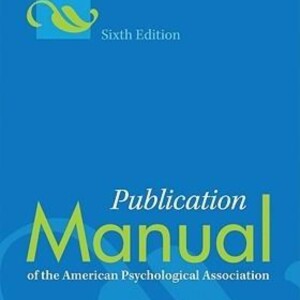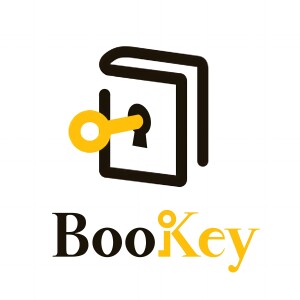
- Podcast Features
-
Monetization
-
Ads Marketplace
Join Ads Marketplace to earn through podcast sponsorships.
-
PodAds
Manage your ads with dynamic ad insertion capability.
-
Apple Podcasts Subscriptions Integration
Monetize with Apple Podcasts Subscriptions via Podbean.
-
Live Streaming
Earn rewards and recurring income from Fan Club membership.
-
Ads Marketplace
- Podbean App
-
Help and Support
-
Help Center
Get the answers and support you need.
-
Podbean Academy
Resources and guides to launch, grow, and monetize podcast.
-
Podbean Blog
Stay updated with the latest podcasting tips and trends.
-
What’s New
Check out our newest and recently released features!
-
Podcasting Smarter
Podcast interviews, best practices, and helpful tips.
-
Help Center
-
Popular Topics
-
How to Start a Podcast
The step-by-step guide to start your own podcast.
-
How to Start a Live Podcast
Create the best live podcast and engage your audience.
-
How to Monetize a Podcast
Tips on making the decision to monetize your podcast.
-
How to Promote Your Podcast
The best ways to get more eyes and ears on your podcast.
-
Podcast Advertising 101
Everything you need to know about podcast advertising.
-
Mobile Podcast Recording Guide
The ultimate guide to recording a podcast on your phone.
-
How to Use Group Recording
Steps to set up and use group recording in the Podbean app.
-
How to Start a Podcast
-
Podcasting
- Podcast Features
-
Monetization
-
Ads Marketplace
Join Ads Marketplace to earn through podcast sponsorships.
-
PodAds
Manage your ads with dynamic ad insertion capability.
-
Apple Podcasts Subscriptions Integration
Monetize with Apple Podcasts Subscriptions via Podbean.
-
Live Streaming
Earn rewards and recurring income from Fan Club membership.
-
Ads Marketplace
- Podbean App
- Advertisers
- Enterprise
- Pricing
-
Resources
-
Help and Support
-
Help Center
Get the answers and support you need.
-
Podbean Academy
Resources and guides to launch, grow, and monetize podcast.
-
Podbean Blog
Stay updated with the latest podcasting tips and trends.
-
What’s New
Check out our newest and recently released features!
-
Podcasting Smarter
Podcast interviews, best practices, and helpful tips.
-
Help Center
-
Popular Topics
-
How to Start a Podcast
The step-by-step guide to start your own podcast.
-
How to Start a Live Podcast
Create the best live podcast and engage your audience.
-
How to Monetize a Podcast
Tips on making the decision to monetize your podcast.
-
How to Promote Your Podcast
The best ways to get more eyes and ears on your podcast.
-
Podcast Advertising 101
Everything you need to know about podcast advertising.
-
Mobile Podcast Recording Guide
The ultimate guide to recording a podcast on your phone.
-
How to Use Group Recording
Steps to set up and use group recording in the Podbean app.
-
How to Start a Podcast
-
Help and Support
- Discover

The "Publication Manual of the American Psychological Association" (often referred to simply as the APA Manual) is a widely-used style guide primarily in the fields of psychology and social sciences. The manual is published by the American Psychological Association (APA), which was founded in 1892 and is one of the largest professional organizations for psychologists in the world.
Author's Background
The APA is not attributed to a single author but is instead a collective effort of expert scholars and professionals in psychology and related disciplines. The organization gathers insights and recommendations from numerous contributors across various fields to ensure that the manual reflects current practices and methodologies.
Context of Publication
The first edition of the APA Manual was published in 1929, with the intention of standardizing the format and citation styles of research papers within psychology to facilitate clearer communication and understanding among scholars and readers. Over the years, the manual has undergone multiple revisions, with significant updates reflecting the evolution of research practices and the integration of technology in academia.
Notable revisions include:
- Second Edition (1974): Expanded to accommodate increased complexity in research and writing.
- Third Edition (1983): Provided more detailed guidelines on manuscript preparation and citation.
- Fourth Edition (1994): Incorporated new formats and guidelines relevant to psychological research.
- Fifth Edition (2001): Introduced changes to improve readability and inclusivity in writing.
- Sixth Edition (2010): Brought about significant updates in citation practices and encouraged the use of digital object identifiers (DOIs).
- Seventh Edition (2019): Presented the latest guidelines, including greater emphasis on accessibility, the use of singular "they," and adaptations for various formats such as online content.
Key Themes and Goals
The primary goal of the APA Manual is to promote clarity, consistency, and fairness in reporting psychological research. It serves as a tool for authors, researchers, and students to present their work in a way that adheres to established academic norms. The manual provides comprehensive guidance on various aspects of writing, including:
- Formatting guidelines for manuscripts
- Citation and referencing styles
- Ethical considerations in publishing
- Tips for writing with clarity and precision
The publication of the manual has played a significant role in shaping research writing and publication practices across disciplines, facilitating a common framework that enhances the credibility and accessibility of academic work.
In summary, the "Publication Manual of the American Psychological Association" serves as an essential resource for students, educators, and researchers, providing them with the tools to produce high-quality, ethically sound research that meets the standards of the psychological community and beyond.
Chapter 2 Analysis of main characters and plotThe "Publication Manual of the American Psychological Association," published by the American Psychological Association (APA), is not a narrative work with characters and a plot like a novel. Instead, it is a comprehensive guide that outlines the standards for writing and publishing in the field of psychology and other related disciplines.
Here are some key elements that can help readers understand the core content of the manual:
Key Elements
- Purpose: The manual serves as a guide to ensure clarity, consistency, and ethical standards in writing and publishing research.
- Writing Style: It emphasizes a clear and concise writing style, encouraging authors to use proper language, structure, and formatting in their work.
- Citing Sources: One of the main focuses is on proper citation practices. It provides guidelines for how to cite various types of sources, including books, journals, and online materials.
- Manuscript Structure: The manual details the typical structure of research papers, including title pages, abstracts, methods, results, and discussion sections.
- Ethical Guidelines: It discusses the ethical considerations in research, such as plagiarism, authorship, and the treatment of human participants.
- Formatting Requirements: There are specific formatting guidelines that cover everything from font size to margins, which helps maintain uniformity in academic writing.
Development
- Updates: The manual is periodically updated to reflect changes in publishing standards, research practices, and the evolving nature of academic writing.
- Examples: It includes numerous examples and sample papers to illustrate how the rules can be applied in real writing scenarios.
- Accessibility: The manual has been developed to help both novice and experienced researchers improve their writing and publication skills.
In summary, while there are no characters or plot in the APA Publication Manual, its key elements and guidelines are essential for anyone looking to write and publish in psychology and related fields, ensuring that their work adheres to professional standards.
Chapter 3 Theme Exploration and AnalysisThe "Publication Manual of the American Psychological Association," now in its seventh edition, serves as a comprehensive guide for writers, researchers, and students in the psychological and social sciences regarding the standards for scholarly writing and publication. Here are some significant themes and topics explored within the manual:
- Writing Style and Clarity
- Conciseness and Clarity: The manual emphasizes the importance of clear and concise language, encouraging authors to avoid jargon and unnecessary complexity.
- Active Voice: Preference for active voice is recommended to enhance readability and directness.
- Bias-Free Language: Guidance is provided to promote inclusivity and respect, advocating for the use of language that avoids bias related to gender, race, disability, and other characteristics.
- Structure of Academic Papers
- General Structure: The manual outlines the standard structure of a research paper, including title page, abstract, main body, and references.
- Headings and Subheadings: Guidelines for the use of headings to organize content logically and improve readability. This includes levels of headings and formatting rules.
- Research Reporting
- Methodology: Detailed reporting standards for methodology, including design, participants, materials, and procedure, to ensure transparency and replicability in research.
- Results and Discussion: Standards for reporting statistical findings and discussions, including how to interpret results in the context of existing literature and theory.
- Citing Sources and Reference Format
- In-text Citations: Guidelines on how to properly cite sources within the text, including different scenarios (e.g., paraphrasing, direct quotations).
- Reference List: Structure and format for various types of references (e.g., books, journal articles, electronic sources), including the use of DOI and URL as applicable.
- Ethical Considerations
- Plagiarism: Strong emphasis on the importance of originality and proper attribution, with guidelines on how to avoid plagiarism.
- Research Ethics: Overview of ethical considerations in research, including informed consent, confidentiality, and the humane treatment of participants.
- Tables and Figures
- Formatting Guidelines: Standards for creating tables and figures to present research data clearly and effectively.
- Supplementing Text: Recommendations on when to use tables and figures instead of or in addition to verbal descriptions.
- Publication Process
- Submitting Manuscripts: Guidance on preparing manuscripts for submission to journals, including considerations for peer review.
- Responding to Reviewers: Advice on how to address reviewer comments and revise manuscripts accordingly.
- Appendices and Supplemental Materials
- Use of Appendices: Instructions on when and how to include appendices for additional information that supports the main text without overcrowding it.
- Supplementary Materials: Recommendations for sharing additional data or multimedia that may enhance the reader's understanding of the research.
- Specialized Topics
- Using Inclusive Language: Specific guidance on language that respects diversity, equity, and inclusion.
- Writing for Different Audiences: Strategies for tailoring writing to different academic audiences and understanding the context of publication.
- Style Guidelines
- APA Style: In-depth explanation of APA style features, including citation formatting, manuscript preparation, and the use of personal pronouns.
- Grammar and Mechanics: Rules regarding punctuation, capitalization, and lists to ensure scholarly standards are maintained throughout the writing.
The "Publication Manual of the American Psychological Association" is essential for any academic or professional writing within the social sciences, providing a framework not only for layout and citation but also for ethical and inclusive communication. This fosters clear and reliable dissemination of research findings.
Book https://www.bookey.app/book/publication-manual-of-the-american-psychological-association
Quotes https://www.bookey.app/quote-book/publication-manual-of-the-american-psychological-association
YouTube https://www.youtube.com/watch?v=H5JWKbrHOAE
Amazom https://www.amazon.com/Publication-Manual-American-Psychological-Association/dp/1433832178
Goodreads https://www.goodreads.com/en/book/show/6684521-publication-manual-of-the-american-psychological-association
More Episodes
 2025-02-28
2025-02-28
 16
16
 2025-02-25
2025-02-25
 15
15
 2025-02-18
2025-02-18
 21
21
 2025-02-17
2025-02-17
 32
32
 2025-02-11
2025-02-11
 16
16
 2025-02-10
2025-02-10
 21
21
 2025-02-08
2025-02-08
 16
16
Create your
podcast in
minutes
- Full-featured podcast site
- Unlimited storage and bandwidth
- Comprehensive podcast stats
- Distribute to Apple Podcasts, Spotify, and more
- Make money with your podcast
It is Free
- Privacy Policy
- Cookie Policy
- Terms of Use
- Consent Preferences
- Copyright © 2015-2025 Podbean.com




